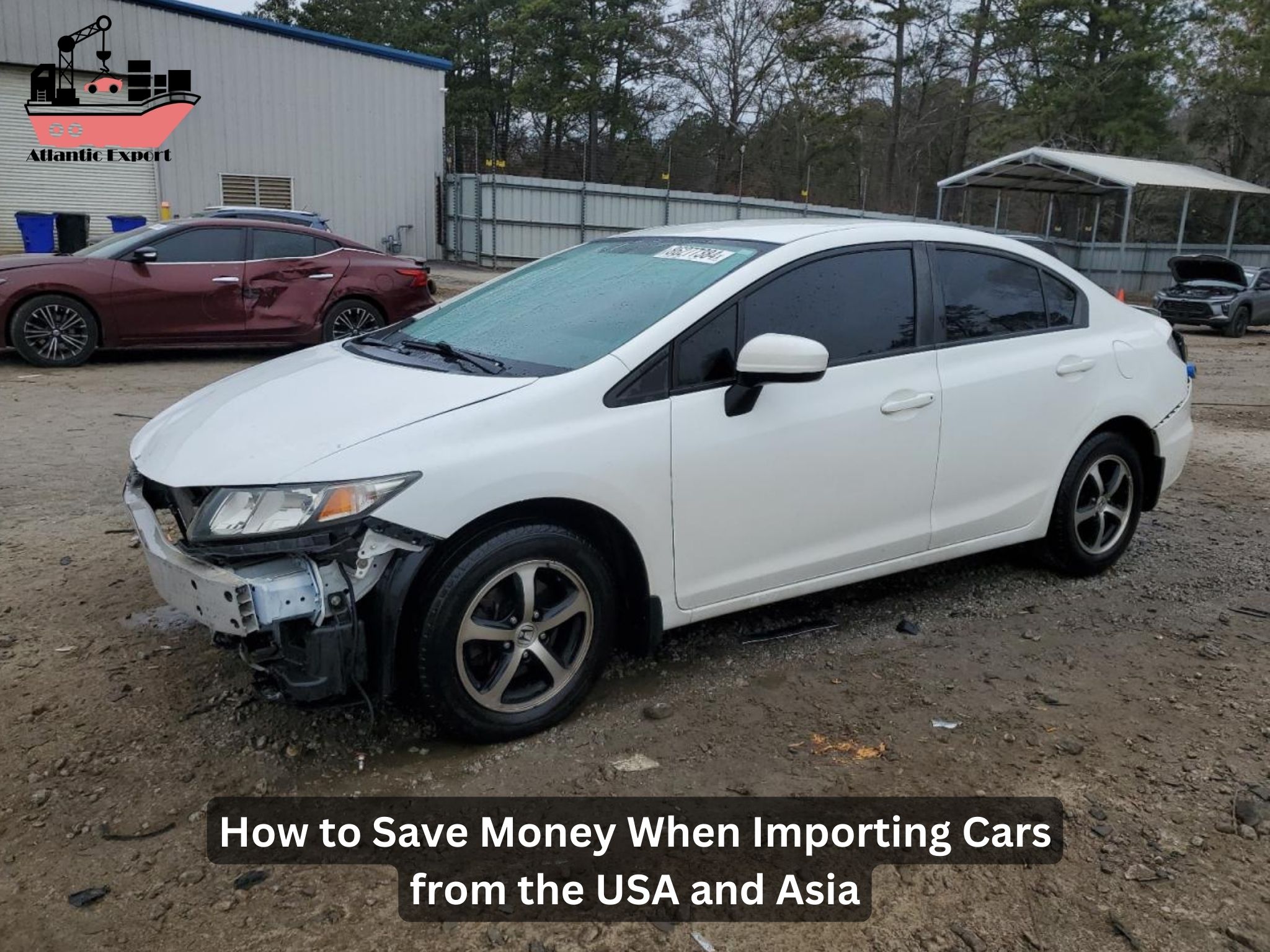Importing a car from the USA or Asia can be a cost-effective way to get the vehicle of your dreams, but the process involves several steps, fees, and regulations that can significantly impact your total costs. By understanding the importation process, optimizing shipping methods, and ensuring compliance with customs and regulations, you can minimize unnecessary expenses. In this guide, we’ll explore how to save money when importing cars from the United States and Asian countries such as Japan.
Understanding the Import Process
Researching Vehicle Compliance and Regulations
Each country has different import regulations regarding safety standards, emission standards, and customs duties. It is crucial to check whether the vehicle complies with the destination country’s requirements before making a purchase. The U.S. Department of Transportation (DOT) and the Environmental Protection Agency (EPA) regulate motor vehicles imported into the USA, while other countries have their own regulatory bodies.
To avoid costly modifications, purchase a vehicle that already meets the required safety and emission standards. In some cases, nonconforming vehicles must undergo expensive modifications to meet the federal motor vehicle safety standards (FMVSS) and EPA emission requirements.
Using a VIN Decoder for Verification
A VIN decoder helps verify the vehicle’s history, model year, and compliance status. Before buying a used car, use a VIN decoder to check if the car meets the U.S. standards or the destination country’s import regulations. This simple step can save thousands of dollars by preventing the purchase of an imported car that is ineligible for registration.
Choosing the Right Shipping Method
Container Shipping vs. Roll-on/Roll-off (RoRo)
When it comes to shipping costs, selecting the right method can make a big difference. There are two primary methods:
- Container Shipping – More secure but generally more expensive. Ideal for high-value cars or classic cars.
- Roll-on/Roll-off (RoRo) – A more affordable option where the vehicle is driven onto a ship and secured. Best for standard used cars and motor vehicles.
If you are shipping multiple vehicles, container shipping may become more cost-effective as you can consolidate shipments. Working with a trusted logistics company like Atlantic Export ensures that you receive the best shipping rates and reliable service.
Reducing Import Taxes, Duties, and Fees
Understanding Import Duties and Taxes
Different countries impose varying import duties, taxes, and fees on imported vehicles. Some of the key charges include:
- Customs Duties – A percentage of the car’s value imposed by the country’s customs authority.
- Value Added Tax (VAT) – Applied to the total cost, including the car price, shipping costs, and insurance.
- Environmental Taxes – Some countries impose extra taxes on high-emission vehicles under laws such as the Clean Air Act.
To minimize importation costs, research the tax rates for different countries and consider purchasing a vehicle with a lower duty rate or an exemption.
Applying for Duty Exemptions
Some importers qualify for reduced import duties or exemptions under special categories such as:
- Classic Cars – Vehicles over a certain age (e.g., 25 years in the U.S.) may qualify for lower import duties.
- Show or Display Exemptions – Some vehicles may be eligible for exemptions if they meet certain criteria under the NHTSA’s program.
- Military and Diplomatic Exemptions – Certain personnel may be eligible for duty-free importation.
Using a U.S. Customs Bond to Lower Costs
For importing cars into the USA, you may need a U.S. customs bond if the car is valued over $2,500. A continuous bond can be more cost-effective for frequent importers, while a single-entry bond is suitable for one-time imports.
Finding the Best Deals on Vehicles
Buying from Auctions and Direct Sellers
To get the best price, consider purchasing from reputable vehicle auctions or direct sellers. Many used cars in the United States and Japan are available at competitive prices through platforms like:
- U.S. and Japanese Car Auctions (e.g., Manheim, USS Auctions)
- Government and Insurance Auctions
- Direct Dealerships and Private Sellers
Atlantic Export specializes in sourcing high-quality used cars from these channels and handling the import process for our clients.
Avoiding Common Pitfalls in Car Importation
Hidden Costs to Watch Out For
Some of the most overlooked expenses in car importation include:
- Storage Fees – If a vehicle is held at the port for too long, additional fees may apply.
- Modifications – Adjusting bumpers, emissions systems, or safety features to comply with federal emission standards.
- Broker and Documentation Fees – Charges for customs clearance and title processing.
Conclusion
Importing a car from the USA or Asia can be a great way to save money if you plan properly and take advantage of tax exemptions, lower shipping costs, and auctions. Working with an experienced importer like Atlantic Export ensures you get the best deals, avoid unnecessary fees, and streamline the entire importation process.
FAQs
1. What is the cheapest way to ship a car from the USA or Asia?
The most cost-effective method is RoRo shipping, but for added security, container shipping may be better for high-value vehicles.
2. How can I reduce import duties on my vehicle?
Research eligibility for exemptions, choose countries with lower import duties, and consider buying a classic car that qualifies for reduced taxes.
3. How do I ensure my car meets import regulations?
Use a VIN decoder to check compliance and ensure the vehicle meets safety and emission standards before purchase.
4. Are there additional hidden costs when importing a car?
Yes, be prepared for storage fees, modifications, broker fees, and customs duties.
5. Where can I find reliable car import services?
Atlantic Export provides trusted, cost-effective car importation services from the USA and Asia.

Leave a Reply